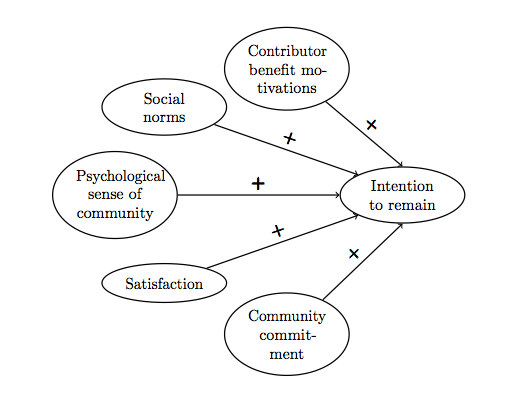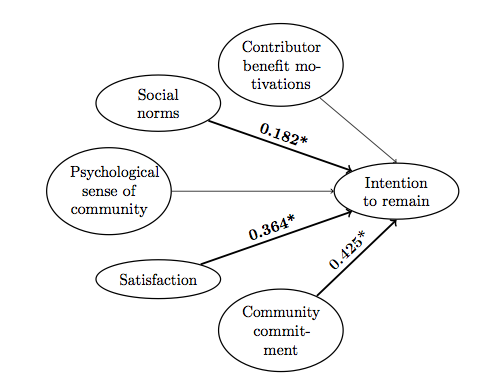Keeping Your Episodic Contributors to Open-Source Projects Happy

Community managers have long been advised to nurture top contributors, but it is also important to consider infrequent and casual (episodic) contributors. There are more potential episodic contributors than habitual ones, and getting the most out of your episodic contributors can require reconsidering your strategies for retaining and incorporating contributors.
There are several reasons you should care about episodic contributors, other than just numbers. Getting more people involved can help more people learn about a project, and new people also bring new ideas. Furthermore, many tasks can be done effectively by episodic contributors, freeing habitual contributors to perform other work. Smaller communities might benefit from contributions to documentation or translations, while communities of all sizes can use extra temporary help when running an event.
Greater benefits are realized when the contributors know something about the community and the work because of their previous engagement, and thus require less time to understand their role. An upcoming scientific study looked at what factors are associated with episodic contributors continuing to return to a community to participate (the article will be available starting in February 2019; see the Resources section at the end of this article). This article describes the key findings of the research.
The Design
Five factors were expected to positively influence an episodic contributor's intention to continue participating, as shown in Figure 1.

Figure 1. Proposed Model of Factors Associated with Retention
Contributor Benefit Motivations
Contributor benefit motivations describes contributor motives that benefit the contributor, such as learning new skills, having fun and improving job prospects. In free and open-source software, these motivations are generally linked to retention.
Social Norms
Social norms describes how the people the participant interacts with on a daily basis—friends, family, co-workers and neighbors—view contributing to free software and open-source software projects. Earlier work found this factor to be relevant for people volunteering for a number of non-profit organizations.
Psychological Sense of Community
Psychological sense of community describes the motivation stemming from the affinity a person experiences when meeting and engaging with a group. Previous research has shown that this factor is relevant for both habitual and episodic participants.
Satisfaction
Satisfaction is the match between expectations and experiences that comes from participation. Feeling appreciated, enjoying the work, believing the work is useful and having good relationships with others in the communities generally leads to satisfaction. Previous research has shown that this is the most important factor in retaining participants.
Community commitment
Community commitment describes the sense of solidarity and of belonging that a person can develop for a community. Although it is often assumed that this factor is more relevant for habitual contributors, research has shown that long-term episodic contributors also can be attached to their communities.
The Findings
Three of the five factors were shown to have a statistically significant effect on an episodic participant's intention to remain in a community, as shown in Figure 2.

Figure 2. Significant Factors Affecting Intention to Remain
Community commitment and satisfaction had the greatest influence on a contributor's intentions, but the often-overlooked factor of social norms, although of less importance, was a demonstrable factor. Based on these findings, a good strategy could focus on these three factors of episodic contributor retention.
The study also looked at whether the duration of participation, contributor age, contributor gender and the type of contribution (code or non-code) had an influence on the model. Gender appeared to influence the model, but there was insufficient data to draw any conclusions. The interesting finding here is that code and non-code contributors are similar, at least in terms of retention among episodic contributors.
However, when the data was clustered, four distinct types of contributors emerged (I describe these below). The model based on four categories can explain about 80% of intention to remain, more than the original model. If you have the capacity to develop distinct volunteer strategies, it may be worthwhile to consider these four categories. Even communities that can't afford to develop multiple strategies could evaluate existing approaches in light of this information.
Satisfied
For the satisfied group, only satisfaction really matters. Every other factor has a negligible influence on the decision to continue to participate.
Classic
The classic group resembles the model that was originally proposed. All five factors have some positive impact on intention to remain, with social norms having the greatest effect.
Social
Social contributors care most about social norms and community commitment, although satisfaction is also important.
Obligated
The obligated group describes people who are strongly affected by community commitment above all other factors. It is because of their identification with the group that they intend to continue contributing.
Understanding what makes episodic contributors return to your community is an important part of a strategy to keep your episodic contributors engaged. The next step is to develop a strategy and identify practices for incorporating episodic participants.
Resources
A preliminary version of this research was presented at PyCon CZ 2018.
Barcomb, A., Stol, K. J., Riehle, D., & Fitzgerald, B. (2019). Why do episodic volunteers stay in FLOSS communities? In 41st International Conference on Software Engineering (ICSE). This article will be available online from February 2019.











